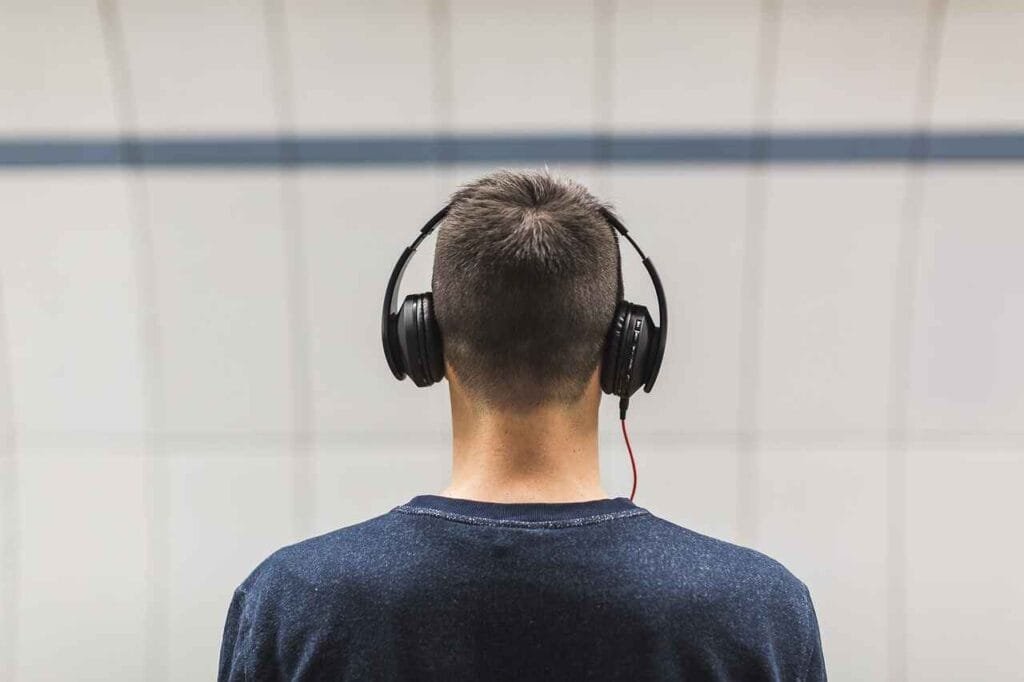Noise-cancelation headphones have been one of the most major accessories in this tech-heavy modern age, keeping busy remote workers, audiophiles, and tech-savvy people at bay from disturbances. Providing an undistracted environment with profoundly immersed hearing, more and more people nowadays adapt these to regular everyday usage. The question now arises-are these noise-cancelling headphones ok to be used all over the day? The aim of this blog is to unravel pros and cons, discuss health implications, and talk about future trends relating to this modern marvel.
The Pros and Cons of Wearing Noise-Canceling Headphones All Day
Advantages of Noise-Canceling Headphones
Noise-canceling headphones have a host of beneficial reasons that have become increasingly sought after, especially by people working in loud environments. A major advantage lies in the increased productivity of the person wearing them. In such cases, when the background noise is at a minimum, the ability to focus on work will be pretty easy and hence increase efficiency and concentration. Be it a busy café or a buzzing home workspace, these headphones carve out your own sound utopia to delve deep into your work or favorite tunes.
It is beneficial for the mind, too. To be able to retire into one’s shell of quiet in today’s world-when an individual is surrounded by noise pollution from all sides-will reduce the level of stress and anxiety. Thus, noise-cancelling headphones eliminate distractions and hence create an atmosphere propitious for relaxation and clarity of mind. All this increases the pleasure of listening to music, podcasts, or audiobooks due to a more profound experience.

Disadvantages of Extended Headphone Use
Whereas these sound like excellent benefits, there is, however, a downside to the usage of noise-canceling headphones when these are worn for several hours continuously. One possible concern with their use has to do with potential hearing damage. When playing audio for extended periods at high volumes, it can fatigue the ears and may further lead to hearing problems later in life. According to Dr. Emily Banks, an audiologist, it is very important to pay attention to the volume when using them and take breaks periodically to avoid hearing issues.
It also creates social isolation. Wearing headphones closes an individual off from the world, limiting opportunities to talk with and communicate with other people. In this respect, feelings of disconnection may take hold, especially within collaborative work environments that are based on direct communication. According to Dr. David Kim, a behavioral psychologist, these headphones can be helpful in helping one concentrate but again should be used in moderation to avoid adverse social impacts.
Dependency on these could also be an issue. Being too reliant on these noise-cancelling headphones would make it hard for users to operate or work in an environment without them. This depletes the ability of adaptability and resilience among circumstances and makes them depended on technology to provide comfort and focus .
Health Implications and Best Practices
Possible Health Effects
Noise-cancelling headphones can result in a number of health risks if used irresponsibly. An obvious risk would be hearing damage, which involves intake of extremely loud audio. These continuous noises, at high volumes, have the potential to cause irreparable damage to the inner structures of the ears. It is, therefore, important to minimize this risk by setting volume limits and making sure to keep correct posture for safe listening.
Another health concern is pressure caused by certain headphone types. Over-ear headphones, in particular, can cause pressure or even headaches when worn tightly for long periods of time. A person should make sure to try to pick headphones with a comfortable fit and an adjustable design to minimize the pressure of the ear and head.
Guidelines for Safe Use
Some best practices to ensure safe and enjoyable headphone use include taking regular breaks. Short breaks can be made to rest the ears to prevent ear fatigue and possible hearing impairment. Practice the 60/60 rule: limit the volume to 60% of the maximum, and listen for no more than 60 minutes at a time.
Consider noise-canceling headphones as a tool but not as something to be worn all the time. Wear them when concentrating on or relaxing from work, but remove them at moments of socializing or when environmental awareness needs to be ensured. In this way, auditory health is taken care of with social relationships.
Work Environments and the Role of Noise-Canceling Headphones
Different Work Settings
Noise-canceling headphones are going to be very useful in different work scenarios, each having their own challenges and benefits. For instance, in open offices where distractions are galore, these headphones create a much-needed barrier to the background noise that employees can steer clear from and concentrate on their tasks. In other words, it is an individual’s personal zone of focus that helps him or her achieve better levels of productivity in a busy workspace.
At home, these headphones reduce the chances of household noise, such as barking dogs or next-door construction noise, and can result in a much quieter and efficient setting. They are also very helpful for remote workers who share their space with family members or roommates. With an isolated auditory space, these headphones allow employees to be professional in video calls and meetings.
Public Spaces and Needless Use
While noise cancelation headphones definitely have their benefits in certain environments, in other situations, this might not be quite as necessary. Public spaces-like libraries or quiet cafes-do not need one to be in complete and utter isolation; headphones prevent the instances of spontaneous social interaction or connection. It’s all about testing whether one needs headphones or not in these different environments and using them more discriminately.
Technology and the Future of Noise Cancellation
Emerging Technologies
Noise cancellation is an area that is still being put in work; technologies promise more efficient ways of operation, and experiences become even more immersive. The latest development in Adaptive Noise Cancellation includes AI algorithms, which dynamically adjust noise reduction depending on a user’s surroundings. This technology allows for dynamic adjustment to bring experiences tailored to different noise levels and scenarios.
Moreover, there is an increasing integration of headphones with smart devices and voice assistants. Noise-cancellation headphones are also being increasingly integrated, allowing for seamless control over the audio playing, answering calls, and interaction with virtual assistants without removing one’s headphones. This helps in smoothing the user experience and providing additional ease, hence making these headphones an inseparable part of modern ecosystems of technology.

The Future of Headphones
Looking ahead, the prospect for noise-canceling headphones is great. Innovations in materials and design promise lighter, more comfortable headphones that can easily be worn continuously without discomfort. Similarly, the continuous development of battery technologies should grant longer usage times without so-frequent charging.
Dr. Lisa Chen, an analyst in the tech industry, points to the increasing adoption of noise-cancellation technology in various devices of late: smart speakers to wearable gadgets. This would mean that their usage would become more holistic in terms of sound environment regulation for general comfort and well-being improvement in various settings.
Final Words
At the end, whether a person should wear noise cancellation headphones throughout the day involves weighing the pros and cons of such action. While this is an extensive benefit-one concerning focus, productivity, and even mental well-being-it has to be responsible not to develop possible health risks or cases of social isolation. Accompanying best practices include setting volume limits, taking breaks, and using headphones strategically in different work environments. This will provide users with a chance to exploit all the advantages of this technology, keeping their auditory health and social connections safe.
The future of noise-cancellation headphones is in good shape, with emerging technologies further increasing their capacity and integration with other devices. Whether it’s for the remote worker who needs to focus on work, the audiophile plunged into sound, or the tech enthusiast who just wants to try out new gizmos-noise-cancellation headphones remain a good tool to have in today’s dynamic world.
Take a minute to share your experiences and tips for healthy headphone use in the comments section below. Want to read more about the latest in auditory wellness and technology trends? Have a look through our library of work, and stay tuned for forthcoming articles and resources. We have to forge ahead together, making choices that create balance and enhanceme











